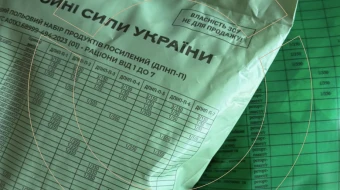The innovative IT system DOT-Chain, developed by the State Operator for Non-Lethal Acquisition (DOT), has significantly enhanced the process of supplying food to the Armed Forces of Ukraine (AFU). Through this system, over 70,000 requests from military units have been processed, resulting in the delivery of 647,743 kilograms of food to our defenders.
The implementation of DOT-Chain has reduced the number of manually processed documents by more than 30,000 per week. This not only streamlined the workload for military personnel who previously spent extensive time on bureaucratic tasks but also freed up their valuable time—an especially critical resource during wartime. Overall, digitizing the supply chain has allowed the State Operator for Non-Lethal Acquisition to cut the entire supply cycle by four times on average.
“For us, it was crucial to implement the system as quickly as possible, and we succeeded. Today, all military units use DOT-Chain for their food supply processes. This marks a significant victory over the ‘paper army.’ The introduction of new technologies enables the Armed Forces to focus on their primary mission instead of wasting time on redundant paperwork,” emphasizes Aliona Zhuzha, IT Advisor at DOT.
A key advantage of digitizing the procurement process is its transparency. In DOT-Chain, all data is stored electronically and is protected against external interference. This reduces the risks of abuse and corruption, while also enabling faster analytics and efficient planning for supplies and other expenditures.
Suppliers also experience noticeable improvements. Bureaucratic processes now take less time, with reduced delays in request processing and payment fulfillment. As a result, the entire supply chain operates more efficiently, minimizing risks of delays or other unexpected situations.
IT solutions that optimize military processes provide additional advantages, allowing resources to be focused on core tasks. The DOT team continues to work on developing and improving DOT-Chain, as the system's architecture allows for rapid scaling and integration into other supply areas for the AFU. All these efforts aim to help our military take another step toward a technological future.













